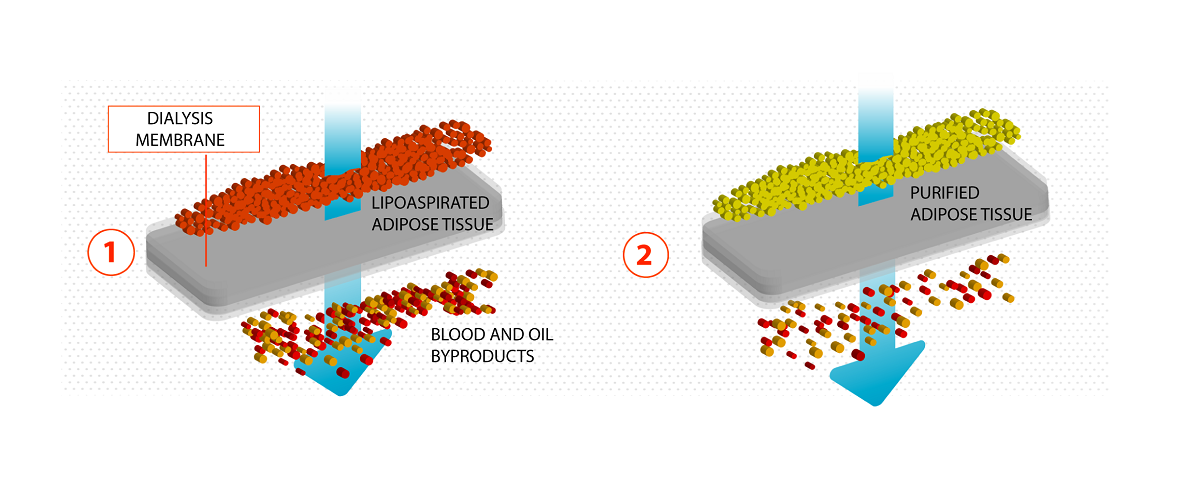This work aims to characterize a new method to recover low-manipulated human adipose tissue, enriched of adipose tissue-derived mesenchymal stem cells (ATD-MSCs) for autologous use in regenerative medicine applications. Lipoaspirated fat collected from patients was processed through Lipocell, a II-a medical device for dialysis of adipose tissue, by varying filter sizes and washing solutions. ATD-MSCs yield was measured with flow cytometry after SVF isolation in fresh and cultured samples. Purification from oil and blood was measured after centrifugation with spectrophotometer analysis. Extracellular matrix preservation was assessed through H&E staining and biochemical assay for total collagen, type-2 collagen, and GAGs quantification. Flow cytometry showed a 2-fold increase of ATD-MSCs yield in treated samples in comparison with untreated lipoaspirate; no differences where reported when varying filter size. The association of dialysis and washing thoroughly removed blood and oil from samples. Tissue architecture and extracellular matrix integrity were unaltered after Lipocell processing. Dialysis procedure associated with Ringer’s lactate preserves the proliferation ability of ATD-MSCs in cell culture. The characterization of the product shows that Lipocell is an efficient method to purify the tissue from undesired byproducts, preserving ATD-MSCs vitality and ECM integrity, resulting in a promising tool for regenerative medicine applications.

